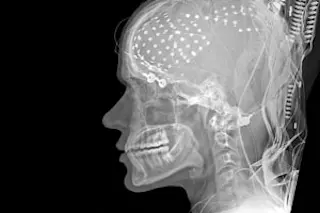Two decades ago, neurosurgeon Itzhak Fried of UCLA was stimulating a woman’s brain with electrodes that had been implanted before surgery to treat her epilepsy. He realized his patient was trying to tell him something, and as he bent down to listen, she mumbled that she had a sudden urge to shift her hand. Apparently an electrode had activated the part of the brain’s motor cortex that controlled the woman’s will to move. Fried realized that medical procedures like this one presented a rare scientific opportunity: Patients being examined for neurosurgery allow researchers to investigate the human brain in action, exploring the functions of different regions in precise detail and in real time.
These days, surgeons like Fried are increasingly partnering with brain researchers to take advantage of this access. About 30 such collaborations are currently under way. Although noninvasive imaging methods such as functional magnetic resonance imaging (fMRI) and ...















